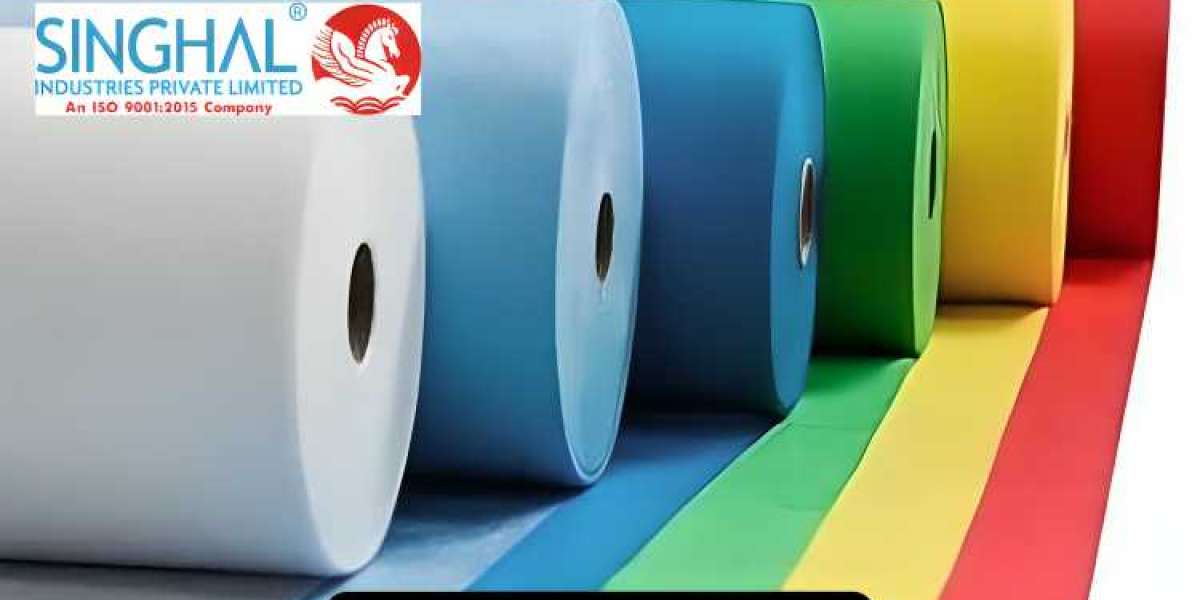PP spunbond nonwoven fabric, also known as polypropylene spunbond nonwoven fabric or simply PP non woven fabric, is a versatile and widely used material with a surprising range of applications. This article delves into the world of PP spunbond nonwovens, exploring its features, production process, and the diverse applications that make it such a valuable material.
What is PP Spunbond Nonwoven Fabric?
Unlike woven fabrics made from threads, or knitted fabrics formed from loops, PP spunbond nonwoven fabric is created through a different process. Here's a breakdown:
- Polypropylene (PP): The base material for this fabric is polypropylene, a thermoplastic polymer known for its strength, lightweight nature, and recyclability.
- Spunbond Process: Polypropylene pellets are melted and extruded into fine fibers. These fibers are then laid onto a moving conveyor belt in a random fashion.
- Bonding: Heat, pressure, or chemical binders are used to create a continuous web of fibers, forming the nonwoven fabric.
The resulting material is a sheet-like structure with several unique properties:
- Lightweight and Breathable: PP spunbond nonwoven fabric is known for its low weight and good breathability, making it comfortable to wear and use in various applications.
- Water-Resistant: While not completely waterproof, it offers good water resistance, making it suitable for repelling light moisture.
- Durable and Tear-Resistant: Despite its lightweight nature, PP spunbond nonwoven fabric exhibits good strength and tear resistance for everyday use.
- Chemical Resistant: This fabric offers resistance to many chemicals and can be used in applications where mild chemical exposure is a concern.
- Recyclable: Polypropylene is a recyclable material, making PP spunbond nonwoven fabric an eco-friendly choice in many cases.
- Cost-Effective: The production process is relatively simple, leading to a cost-effective material with a wide range of applications.
Production Process of PP Spunbond Nonwoven Fabric
The creation of Spunbond nonwoven fabric involves several key steps:
- Extrusion: Polypropylene pellets are fed into an extruder where they are melted into a molten state.
- Fiber Formation: The molten polypropylene is forced through a spinneret, a device with tiny holes, creating continuous filaments of fiber.
- Cooling and Attenuation: As the fibers exit the spinneret, they are cooled by air, solidifying into individual fibers. Airflow can also be used to stretch the fibers, influencing their diameter and properties.
- Web Formation: The cooled fibers are laid down onto a moving conveyor in a random fashion, forming a continuous web of fibers.
- Bonding: Heat, pressure, or chemical binders are applied to create permanent bonds between the fibers, giving the nonwoven fabric its form and strength.
- Finishing: The fabric may undergo additional finishing processes like calendering (smoothing the surface) or adding treatments for specific applications.
Applications of PP Spunbond Nonwoven Fabric
The versatility of PP spunbond nonwoven fabric makes it a valuable material across various industries. Here's a glimpse into its diverse uses:
- Medical and Hygiene: This fabric finds application in disposable medical gowns, face masks, surgical drapes, wipes, and hygiene products due to its breathability, water resistance, and bacterial barrier properties.
- Agriculture: PP spunbond nonwoven fabric is used in agricultural applications like weed control mats, seed germination covers, and frost protection blankets due to its lightweight and breathable nature.
- Packaging: Bags, pouches, and envelopes for various products are often made from PP spunbond nonwoven fabric due to its durability, cost-effectiveness, and recyclability.
- Construction: This fabric can be used as a breathable underlayment for roofing and flooring, offering separation and moisture protection.
- Home Furnishings: PP spunbond nonwoven fabric finds use in furniture covers, mattress toppers, and disposable tablecloths due to its lightweight and disposable nature.
- Filtration: Melt-blown nonwoven fabrics, a variation of PP spunbond, are used in air and liquid filtration applications due to their fine fiber structure.
- Apparels: Disposable coveralls, bouffant caps, and other non-critical clothing items can be made from PP spunbond nonwoven fabric for its cost-effectiveness and functionality.
Conclusion
PP spunbond nonwoven fabric offers a unique combination of properties – lightweight, breathable, water-resistant, and cost-effective – making it a valuable material across various industries. From medical applications to agriculture and packaging, its versatility ensures its continued presence in our daily lives. As technology advances, we can expect further development in PP spunbond nonwoven fabrics, including improvements in recyclability, biodegradability, and functionalities for even wider applications.
FAQs(Frequently Asked Questions)
Q1. Is PP spunbond nonwoven fabric eco-friendly?
A1. PP itself is recyclable, making PP spunbond nonwoven fabric a potentially eco-friendly choice compared to non-recyclable materials. However, the environmental impact depends on factors like the use of disposable products and the recycling infrastructure available.
Q2. Can PP spunbond nonwoven fabric be printed on?
A2. Yes, PP spunbond nonwoven fabric can be printed on using various techniques like flexographic printing or gravure printing. This allows for customization with logos, designs, or information for branding or functional purposes.
Q3. What are some alternatives to PP spunbond nonwoven fabric?
A3. Several alternatives exist depending on the desired properties. These include nonwoven fabrics made from other materials like cotton, polyester, or lyocell. For some applications, woven or knitted fabrics might be suitable options.












